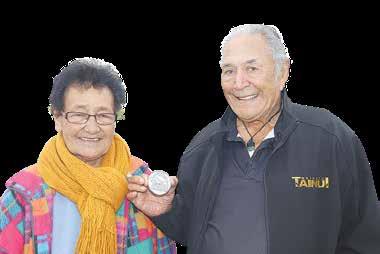
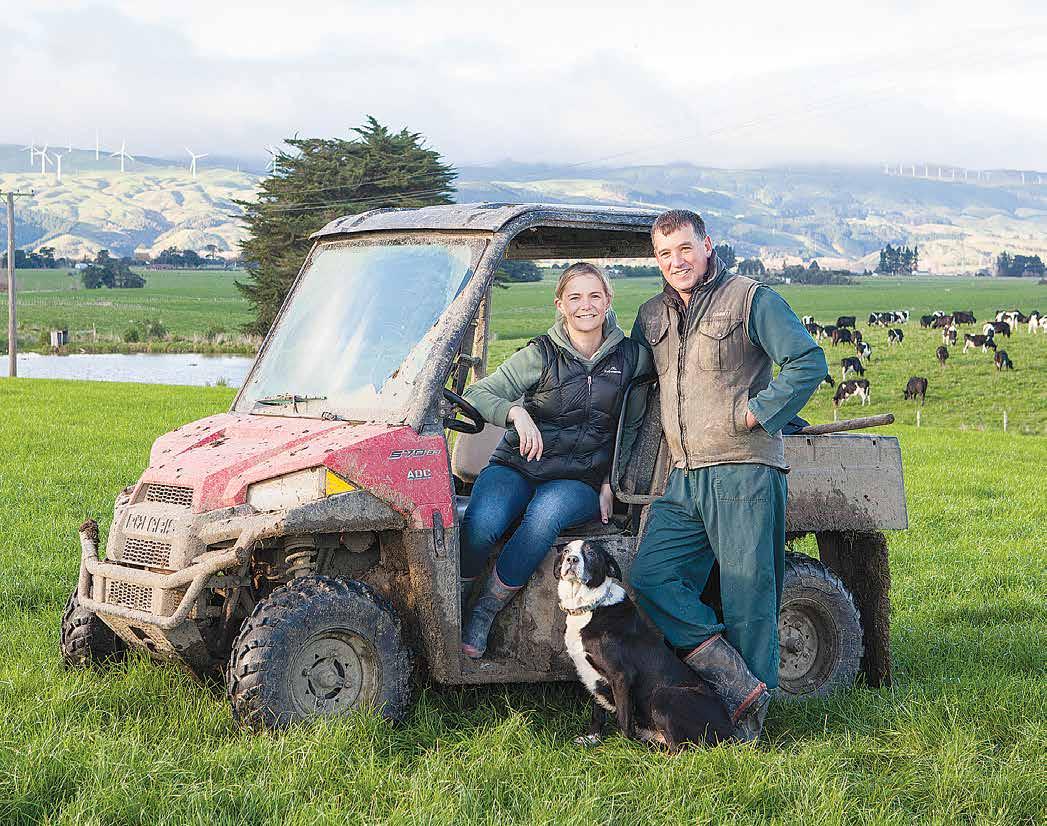
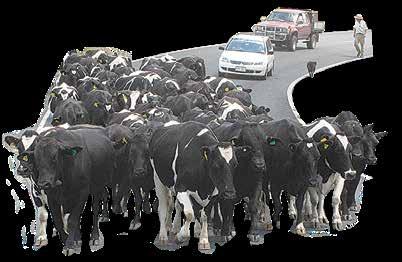


MAY 14, 2024 ISSUE 542 // www.dairynews.co.nz MOVING DAY Keeping animals safe AHUWHENUA TROPHY Blast from the Synlait shares plunge. PAGE 3 delaval.com Talk to the Upgrade Specialists 0800 222 228 Give your milking system an upgrade with the DeLaval Evanza™ cluster, the most efficient milking cluster we’ve ever developed - for more milk with better udder health and minimal service. UPGRADE YOUR CLUSTERS? IS I T T I M E TO STEWARDS OF LAND James and Debbie Stewart, Manawatu, believe it’s always better to be ahead of compliance. PAGE 4

Continue breeding your best with sexed semen

You’re looking forward to the end of the season; getting the dry off done and you’re starting to think ahead.
Now’s the time to start making some good calls with your mating plan for next season.
Choosing female sexed semen can help you breed the best cows, faster. By generating heifer replacements from your best performers, you can maximise cow efficiency which also helps reduce your emissions intensity. And selecting fresh over frozen is best – with Premier Sires® sexed semen teams delivering near normal non return rates.
So, before the cows dry off, put your best foot forward for next season and lock in your sexed semen order.
Talk to your Agri Manager today about sexed semen or visit lic.co.nz/sexedsemen
There's always room for improvement
KINGST_2329_DN_A
Animal Health
Genetics
Herd Testing MINDA® GeneMark®

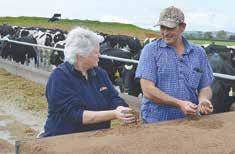
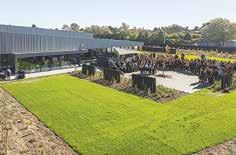
Synlait shares take a hammering
SUDESH KISSUN
sudeshk@ruralnews.co.nz
TROUBLED MILK processor Synlait’s share price is taking a hammering as nervous investors offload their stakes.
Last week, the share price had tumbled to 46c/share, pushing the value of the company on the New Zealand Stock Exchange to only $100 million. By comparison, two years ago the share price was around $3.23/share and in August 2018 it had reached an all-time high of $13/ share. In the past 12 months, the company’s share price has lost 68% of its value.
Senior analyst equities at Forsyth Barr, Matt Montgomerie says the falling share price reflects investor nervousness.
“There’s investor nervousness around Synlait Milk’s ability to achieve its desired asset sales,” Montgomerie told Dairy News
“We believe selling the North Island assets at or near book value will be unlikely, and thus concerns around its ability to repay the $130m of bank debt in July and $180m retail bonds in December.”
Montgomerie believes Synlait needs to urgently come up with a deal to offload its new processing plant at Pokeno and a blending and canning facility in Auckland to calm investor nerves and arrest the decline in the share price.
“Investor nervousness is rightly warranted, with asset sales required
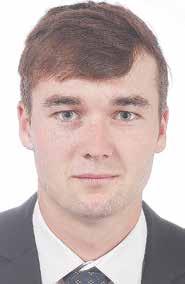
to repair the balance sheet,” he says.
The deflated share price could also make Synlait the target of a takeover. However, Montgomerie believes a takeover of Synlait Milk, as a group, is unlikely.
“The obvious buyer is The a2 Milk Company (a2MC) but we don’t see this as viable given its lack of desire for Dairyworks or the North Island assets.
“That said, we do think a2MC acquiring its prized Dunsandel asset is still on the cards but note that Synlait would prefer to sell its other assets before this scenario.”
Last month, Synlait reported its six-month results: net loss after tax was $96.2 million with adjusted net loss after tax of $17.4m. Net debt rose 8% to $559m. Gross profit was down 47% to $43.6 million.
“There’s investor nervousness around Synlait Milk’s ability to achieve its desired asset sales.”
The company said it was carrying out “a strategic review” of its North Island assets. It was also thrown a lifeline by its banking syndicate, which has extended the $130 million prepayment due March 28 to no later than July 15, 2024 and approved an additional $30m shortterm funding until June 27.
Synlait’s largest shareholder, Bright Dairy of China, has provided a letter of support that includes a commitment to participate in a future equity raise and to extend a loan at the request of Synlait.
The financial upheaval also led to another round of board and management changes at Synlait last month.
Co-founder John Penno stepped down from the board, ending a 25-year leadership role within the listed company. Penno co-founded Synlait and was managing director and CEO for 12 years. In 2018, he became a board appointed director, during which time he was temporarily appointed acting CEO and then chair.
Synlait has also appointed a new chairman, George Adams, who joined the board in March this year.
Acting chair Paul McGilvary will resume his role as an independent director.
Penno says he supports Adam’s appointment as chair and “remain committed to Synlait’s future as a co-founder and shareholder”.
“Synlait has come a long way since we co-founded the company, buying a farm in Te Pirita near Dunsandel almost 25 years ago. We now take world-class nutrition products to the world and have played a disruptive role in the growth of the New Zealand dairy industry. I am proud of what we have achieved. However, now is the right time for me to leave my leadership role with Synlait.”
The company recently reshuffled its management team. Chief finance officer (CFO) Rob Stowell took over the newly created position of chief commercial officer, assuming responsibility for several “critical strategic workstreams” including the sale of its cheese making subsidiary Dairyworks, the North Island strategic assets review, a potential equity raise, and the banking syndicate relationship.
Charles Fergusson has been appointed acting CFO while retaining current responsibilities for on-farm excellence, business sustainability, and corporate affairs.
Montgomerie says it’s hard to speculate around Penno’s departure but it signifies the current precarious situation Synlait Milk is in.
“This adds fuel to the growing fire,” he says.
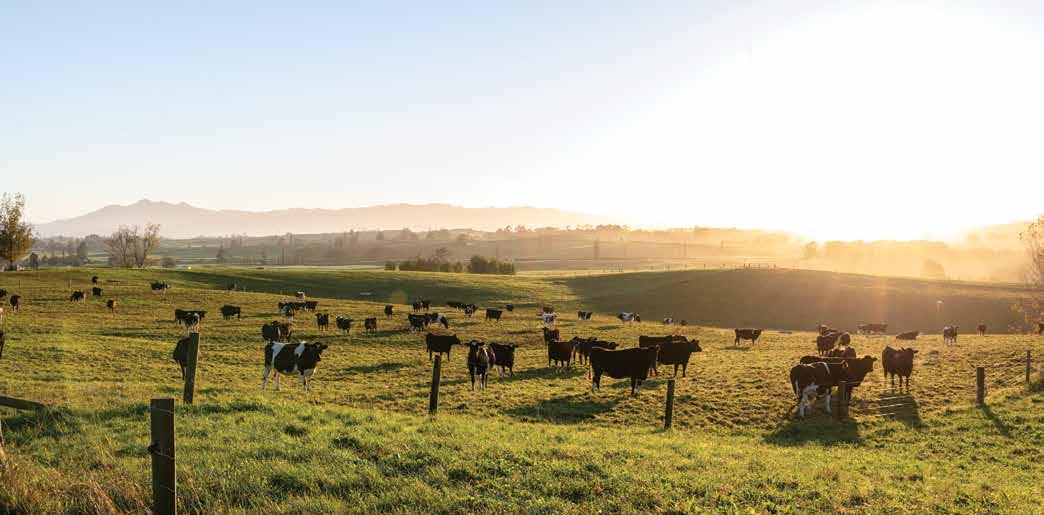
DAIRY NEWS MAY 14, 2024 NEWS // 3 NEWS 3-8 AGRIBUSINESS 9 OPINION 10 MANAGEMENT 11-12 ANIMAL HEALTH 13 MOVING DAY 14-17 MACHINERY & PRODUCTS 18-19 ‘An absolute honour’. PG.06 Landpower’s new hub. PG.18
Trusted
feed supplier. PG.11
Forsyth Barr analyst Matt Mongomerie.
Great stewards of the land
MARK DANIEL markd@ruralnews.co.nz
JAMES AND Debbie Stewart of Dairylands in the Manawatū are no strangers to taking home the silverware.
Having last entered the awards scene about 15 years ago, recently their office wall has been sagging under the weight of the Bayleys People in the Primary Sector, Dairy NZ Sustainability and Stewardship and Rabobank Agri-Business Awards, alongside the NZFET Biosecurity, Innovation and Climate Recognition Awards and the Margaret Matthews trophy for Commitment to Sustainability in the Ballance Farm Environment Awards.
Located at Hiwinui, on the outskirts of Palmerston North, the family can trace its roots back to Scotland and the arrival of their ancestors to the Manawatū in the 1880s.
Typifying the New Zealand term ‘good bug-
gers’, the Stewart’s operation centres around people, the environment, animals and delivering a quality product, while at the same time being forward thinking and ready to adopt beneficial technology and innovation.
Their journey to a balanced approach began around 12 years ago when they started the ongoing task of planting a thousand trees each year.
These plantings are not only for aesthetics, but to also attract bird life in less productive areas, help with erosion protection and keep waterways cleaner. Converting from sheep to dairy 25 years ago, a tried and tested solution to keep cows out of plantings and waterways uses seven or eight wire fencing, without battens, but with three ‘hot’ wires.
James Stewart says they see themselves as stewards over their land.
“We believe it’s always better to be ahead of compliance and the big stick, so the best time
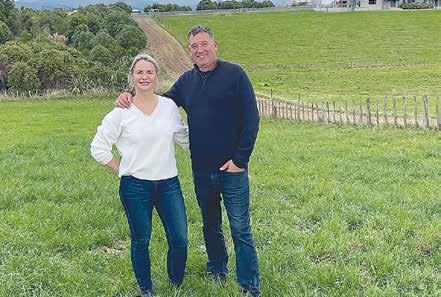
to invest in initiatives is today.”
Dairylands milks 800 cows, split over two farms of 580ha, with a 350ha milking platform, with the remainder used for young stock and a small amount of cropping. They run a System 3 operation relying on 85% grass with feed imported to extend lactation and for dry cows.
James describes the farm as heavy land, so favours lighter cows, grazed at 2.2 to 2.4 animals per hect-
are and achieve pasture production of about 12 tonnes DM/ha.
Debbie Stewart notes that as the farm lies on the fringes of Palmerston North, they are aware of the impression they create with their urban and rural neighbours.
“We want to create a positive message about dairy farming and strive to protect our social licence. We are active in this area by hosting open days, where we welcome visitors from schools,
Massey University and overseas guests including those from the Hiwinui Country Estate we have on farm. We also welcome volunteers from the surrounding area who help in our planting initiatives,” she says.
James says schemes like the Ballance Farm Environment Awards are a great name for what the farm is trying to achieve.
“We strive to create a balance on our farms, set an example for our children and staff and hoping
to come out the other side with a reasonable profit.”
Looking at Dairylands’ investment in technology, solar panels are fitted to the main dairy shed, purchased on a lease to buy plan over seven years.
Described by Debbie as “cost-neutral”, ownership of the panels will pass to the Stewarts at the end of the period and with a life expectancy of approximately 25 years, continue to make appreciable costs savings.
A recycling initiative in the dairy shed is centred around green washing, collecting parlour and yard washings, that then pass through a separator, with the solids returning to the farm and gardens on the property and filtered water being recycled – so currently saving up to 30 cubic metres each day.
Cows are fitted with collars for heat detection and in parlour recording and drafting, with the farms also using systems such as proof-of-
LANG IS TOP CHEESEMAKER, AGAIN!
FONTERRA BRANDS’ Cathy Lang has been crowned the country’s best cheesemaker for the second time in three years.
Lang is the co-operative brands business master cheesemaker and principal technologist at the FBNZ Bridge Street site in Eltham, Taranaki.
She told Dairy News that winning the MilkTest NZ Champion Cheesemaker title at the annual NZ Champions of Cheese awards this month is not just a personal milestone “but a recognition of the collective passion and hard work of our entire team”.
“It’s about the art of crafting cheese that resonates with both the judges and cheese lovers alike. I look

forward to continuing to push the boundaries of cheesemaking.”
To win the coveted title each cheesemaker entered three cheeses of different styles showing their cheesemaking breadth. Lang showed Kapiti Artisan Ash Rind White, Kapiti Artisan Bridge St Blue and Kapiti Rarama. She made a remarkable transition into cheesemaking in 2005 after two decades in veterinary science. Her success is a testament to her ability to blend cheesemaking science with creativity. Since joining Fonterra in 2014 Lang has been instrumental in driving its NZ speciality cheese development, with her dedication to excellence consistently recognised with numerous
national and international accolades.
At the awards, Fonterra also cemented its position as the country’s number one cheesemaker by picking up nine NZ Champion of Cheese trophies this year.
Fonterra’s NZMP Epicure – also sold as Mainland Epicure aged cheddar – took the top title of Woolworths Champion of Champions (Commercial). The judges described this as, “Beautiful! An abundance of calcium lactate, intense good string mature flavour yet well balanced, and clean. Pleasurable savoury tone, with fruity, sweet and nutty alongside.”
The country’s second largest milk processor Open Country Dairy

received the Woolworths Sustainability Award, assessed by a panel who reviewed cheese companies’ sustainability initiatives, with a focus on production. The judging panel noted


placement for fertiliser, Levno, and automated wage planning into management.
They operate with four permanent and two part-time staff.
James also voices the benefits of Fonterra’s Dairy Insights Programme, not least as a confirmation they are heading in the right direction.
James says data collection can sometimes seem a bit of a chore, but the value of that data is a huge benefit to managing the farms.
“The fact is that in today’s environment you have to know your numbers to make any meaningful change. That includes leaching, greenhouse gases and the intensity of your emissions. ‘Environment’ is the New World, so we address the constant change with professionalism, always trying to stay one step ahead of legislation and in doing so, see a great future for agriculture.”
Open Country demonstrated a clear understanding of the challenges and opportunities associated with sustainable cheese production.
The judges stated, “We were particularly impressed by the company’s initiatives to addresses decarbonisation within their value chain and commended Open Country’s decision to phase out coal boilers and use renewable energy.”
At the annual awards, 26 trophy winners were announced following an extensive evaluation in early March assessing more than 250 locally produced cheeses, with the finest 187 already honoured with gold, silver and bronze medals.




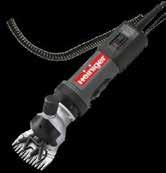

DAIRY NEWS MAY 14, 2024 4 // NEWS
James and Debbie Stewart say they see themselves as stewards over their land.
Ultimate 3 12V handpiece with battery pack • The complete tail clipping, shearing & dagging solution • Compatible with your favourite combs & cutters • Features thumb operated momentary switch • Comes with battery backpack & pouch 712-150 21/23 Blade Set • Perfect for dairy clipping • Leaves 2-3mm cover 703-520 Xplorer Cordless clipper • Up to 120 min runtime • Lightweight at 990g • Quiet at only 65dB • Cutting speed of 2450dbs/min 708-402 Xplorer Pro 2-Speed cordless clipper • Up to 120 min runtime • Lightweight at 975g • Battery level indicator • All-new clipping pressure display • 2 Cutting speeds of 2450/2900 dbs/min 708-602 Heiniger New Zealand | (03) 349 8282 | heiniger.co.nz
Fonterra’s Cathy Lang is the 2024 MilkTestNZ Champion Cheesemaker of the Year.
NEW
Clipping dairy Solutions
WITH JUST over two weeks left in the 2023-24 season, all eyes will be on Fonterra’s opening milk price for the new season.
Lower milk output from key producing regions is expected to keep upward pressure on milk price in the coming months. But China’s growing milk production could provide headwinds.
Rabobank and Westpac are forecasting an opening milk price of $8.40/kgMS for the new season. ASB is predicting $8.35/kgMS.
In its Q2 Global Dairy Quarterly report titled Lower equilibrium, Rabobank says milk production from the main global export regions will expand only modestly
in quarter three before gaining some momentum towards the end of the year.
“Low profitability over the past 12 months has led to a decrease in dairy herds in key regions like the US and South America, while weatherrelated issues have also affected milk output in recent weeks, with diminished rains in New Zealand and excess rains in Europe,” says Rabobank senior agricultural analyst Emma Higgins says.
“And this subdued global milk supply growth should help underpin a continuation of the dairy market recovery and an improvement in milk prices for dairy producers in most regions around the world.”
While this was the case, Higgins warned the recovery would not be
2022,” she says.
Considering these factors, Higgins says, the bank’s view was that the current recovery in dairy market prices would now be slower than anticipated in its quarter one report.
Emma Higgins, Rabobank says milk production from the main global export regions will expand only modestly in the coming months.

smooth.
“Global demand recovery signals are mixed, and consumers’ purchasing power remains under pressure,” she says.
“Although unemployment remains close to record-low levels in most large markets, consumer sentiment is gloomier
than anticipated. Inflation remains above target in most countries and high interest rates continue to put pressure on debts and consumer spending at a time when credit plays an important role after cumulative inflation in recent years.”
Another potential headwind for dairy prices,
according to Higgins is higher milk production in China.
“We have now revised our milk output in China for 2024 from two per cent to 3.2 per cent, reflecting higher-thananticipated output due to the lagging effect from the last round of dairy expansions during 2019-
“The jump in prices in late 2023 and early 2024 appears to have been more of a response to low prices and re-stocking than a sustained improvement in consumer demand in most regions,” she said.
“China’s reduced dependence on imports will also be a headwind for the global dairy market in the months ahead.”
Higgins says the expectation Chinese milk production would grow at a quicker rate, was a particular challenge to Rabobank’s milk price forecast
New CEO for Dairy Goat Co-op
HAMILTON-BASED DAIRY Goat
Co-operative (DGC) is revamping its leadership in the hope of recovering from its financial doldrums.
A new chief executive starts next week, and the co-op chair Campbell Storey will step down from the role at DGC’s annual meeting in September.
Alastair Hulbert, who has a marketing degree from Massey University, starts as CEO on May 20. He replaces David Hemara who left the
co-op a month ago. Former chief executive Tony Giles is acting as CEO until Hulbert takes over.
Dairy News understands DGC needs a cash injection to remain viable. There was backlash from farmer shareholders earlier this year after DGC asked suppliers to reduce their milk supply by one-third for the coming season.
In March, Hemara told Dairy News that DGC had advised its shareholder
suppliers that it will call for less milk in the 2024/24 season than shareholders would normally expect to supply.
“While the final amount of milk per shareholder is yet to be finalised, we have advised shareholders that we expect that they will be asked to reduce supply to around two-thirds of normal level.
“This reduction is necessary to better balance incoming milk against forecast product sales for 2024/25.

This is a continuation of a cap that we have applied for several seasons and reflects changing demand levels in some markets since Covid.”
Hemara said that the global supply/demand situation for goat milk has been impacted by four key factors: Declining birth rates internationally, sales channels that have changed during Covid – including the Daigou informal sales channel to China, and cost of living pressure in many econo-

for the upcoming New Zealand dairy season.
“Chinese production figures are especially significant for New Zealand’s dairy sector given their influence on Chinese import requirements and the fact more than 30 per cent of this country’s dairy exports head to the Chinese market,” she says.
“And we do see this increase in Chinese milk output as a downside risk factor to the New Zealand farmgate milk price.”
The report says a New Zealand milk price of $8.40kg/MS would be broadly profitable at a national level, but budgetary pressures are likely to remain for local producers.
“Should milk prices for the 24/25 season stay near this level, costs will still remain front.”
mies. There has also been a structural change in the China consumer market where over the last four years China consumers have moved strongly to support Chinese domestic brands. This same impact has occurred in the infant formula segment, he added.
“At present, our view is that there is more goat milk than demand globally.” – Sudesh Kissun
@dairy_news
facebook.com/dairynews


DAIRY NEWS MAY 14, 2024 NEWS // 5 *Finance offer only available at participating Polaris Dealers and on selected models as stated and is not valid with any other promotions. Finance is provided by Polaris Finance, a program operated by De Lage Landen Limited Company No 1355515 and available for business purposes only on a Hire Purchase Agreement. Credit approval, fees, terms and conditions apply. Finance is based on a 24 month term, for full promotion details and structure please contact your Polaris Sales Representative. Offer ends 30/6/24. 4.99 % P.A. FINANCE * ON SELECTED MY23 RANGER AND SPORTSMAN NO DEPOSIT | 24 MONTHS
$8.40/kgMS as
for new
Banks pick
milk price
season
SUDESH KISSUN sudeshk@ruralnews.co.nz
DWOTY Award – ‘an absolute honour’
JESSICA MARSHALL jessica@ruralnews.co.nz
HUMBLING, OVERWHELMING, and an absolute honour. That’s how 2024 Fonterra Dairy Woman of the Year Katrina Roberts describes her win at the Dairy Women’s Network conference earlier this month.
Roberts, a herd health veterinarian and dairy consultant, says she is still processing the win.
“It’s been a bit of a whirlwind few days,” she told Dairy News.
Roberts has worked as a vet in the dairy industry for more than 20 years.
Her work within the dairy industry started as a vet student at the University of Melbourne when she began working on a research project with Professor Jock MacMillan. She says it was that
research project, looking at cattle reproductive physiology, that started her on the path she’s on today.
“And so, while I was doing practical work in final year, Jock suggested that I come to New Zealand and meet Scott McDougall, who was one of Jock’s earliest PhD students,” she says.
McDougall was working at what was then Animal Health Centre (now Anexa) in Morrinsville, and had set up a research division as part of that practice.
Roberts joined Animal Health Centre in 2003, starting work as a dairy vet.
“But alongside being a dairy vet, I was also doing my masters in epidemiology, so I was halftime working as a dairy clinician, and half-time doing research through Massey,” she says.
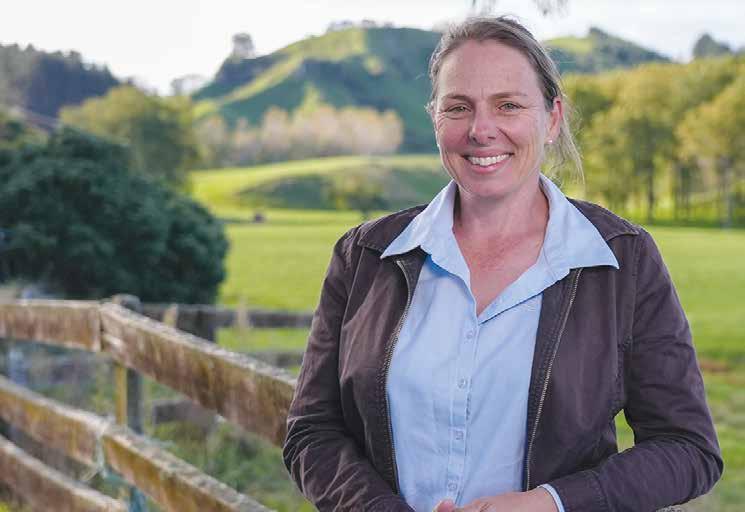
Roberts masters project investigated risk factors and prevention strategies for heifer mastitis in NZ.


Fully Escorted Tours
Tailor-made for the 60 plus traveller
Great Britain & Ireland
Jul 14, 2024, 30 Days
Join our timeless adventure across Great Britain and Ireland.
A tapestry of incredible destinations and breathtaking experiences. From London's Royal pageantry and a dazzling West End show, to the historic streets of Oxford and the enigma that is Stonehenge. Journey through the Cornish Peninsula, Cardiff and Waterford and embrace the legend of the Blarney Stone in Killarney. The incredible Ring of Kerry, the dramatic Cliffs of Moher, the rich history of Belfast, the Giant's Causeway. Explore ancient Chester and experience Liverpool. Cruise Lake Windermere, tour Glasgow and visit the
“It was a real problem that our farmers were extremely frustrated by,” she says. “There weren’t really any effective strategies back then. There were a few ideas that had been tried but nothing really broke the back of the problem.
“There were herds I was working with that were getting 20 to 30% clinical mastitis rates in their heifers within the first month of calving, so horrific wastage in terms of antibiotics, animal welfare, lost quarters, and reduced production, which is massive.”
One of the strategies that Roberts and her
IN HER spare time, Roberts volunteers on a Friday with Cambridge Riding for the Disabled.
“I think volunteering is the best thing ever. One of the things I love about RDA is that all the volunteers, they’ve all had busy weeks, they all have things going on in their life and then when they get to RDA they’re all there for the sole purpose of helping the riders, using the horses as a tool to help those kids grow and develop and have a bit of normality,” she says.
“I think giving our time is something that people struggle with in the current busyness of life and it’s so worth it.”
So, what’s next?
“I’m really looking forward to opening my mind to other areas of NZ agriculture and seeing what those people are doing with the Kelloggs Rural Leadership Scholarship,” she says.
“Winning this award allows the platform for me to demonstrate the important role that female dairy vets have within the dairy farm team. The strong long-term relationships we have with our farmers leads to success for farmers, vets, the cows and the wider dairy industry – it’s a win-win,” she says.
fellow researchers found worked was putting an
internal teat sealant into heifers four to six weeks
before calving.
“And it was unbelievable, it was so effective, we achieved 50-70% reduction in clinical mastitis,” she says. This prevention strategy is widely adopted across the industry now.
For a few years after completing that research, Roberts worked as a full-time dairy vet out of branch clinics in Te Aroha and Matamata –where she still works today.
It was around this time that Dairy NZ adopted the In Calf Program which looks at herd-level reproductive improvement.
“The programme was adopted and myself and others were in that very first group that were trained.”
It was during that training that Roberts discovered she wanted to work in the herd health space “to really affect change on-farm”, and she’s still involved in the program today.
She says it was while working with farmers on herd health that she realised that to lead change on farm, particularly in the herd reproductive space, she would need to understand the whole farm system, thus leading to her work as a dairy farm consultant.
“All of a sudden I realised that, if I’m going to actually help my farmers improve their reproductive performance, I need to understand the whole farm to be able to work alongside my farmers.”
REGIONAL LEADER AWARD
EASTERN BAY of Plenty farmer
Rebecca O’Brien was named the 2024 Dairy Women’s Network (DWN) Regional Leader of the Year.


O’Brien started her career in tourism before moving into sharemilking and now manages a 1000-cow herd across two dairy farms in Galatea.
It was this move that led her to connect with her community, ultimately taking up leadership
 Rebecca O’Brien
Rebecca O’Brien
opportunities. In addition to dairy farming, she mentors staff who are training with Primary ITO, and volunteers in her local community.
“Rebecca has been an instrumental part of the growth of the Eastern Bay of Plenty chapter of DWN, creating a sense of inclusivity among its members, community clubs, supporting businesses, and the DWN team,” says DWN chief
executive Jules Benton.
“She embodies DWN’s value of seizing opportunities and has improved the lives of those in the network and her community,” she says.
“She has an innate ability to influence people, encourage them to take opportunities, and make a difference.
“She is so well deserving of the Regional Leader of the Year award.”
DAIRY NEWS MAY 14, 2024 6 // NEWS
VOLUNTEER ROLE
2024 Fonterra Dairy Woman of the Year Katrina Roberts is still processing the win.
for Your Protection Since
Bonded
1993
RABOBANK SAYS climate change creates both risks and opportunities for the bank and its clients and that the food and agriculture sector needs to recognise the potential for both.
Rabobank NZ chief executive Todd Charteris notes that the transition pathway for New Zealand food and agriculture will ultimately be driven by market access considerations, given our agriculture sector’s dependence on regional and global trade.
‘’Transitioning to lower emissions intensity farming systems can support market access and can lead to improved efficiencies, reduced input costs and better profitability.
“Where appropriate, it can also support the growth ambitions of our clients within the context of increasingly stringent regulatory standards.
“The transition is also essential to us collectively managing the risks that we all share.”
Charteris made the comments at the launch of Rabobank NZ’s latest Sustainability Report covering the bank’s endto-end ambition for
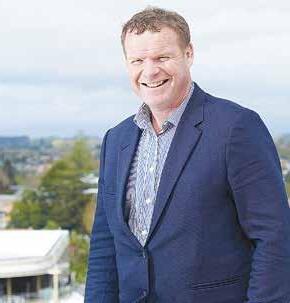
sustainability and highlighting its progress in the 2023 calendar year.
Rabobank says that, with its own operational improvements only moving the emissions reduction needle so far, its sustainability efforts are largely focused on supporting its clients to reduce their emissions.
“It is in our interests to do our bit to minimise the impacts of climate change. For us that means supporting New Zealand’s farmers and growers to balance the priorities of providing food security to a growing world with reducing the impact agriculture has on the environment,”
OAD milking affects protein content Bank helps clients reduce emissions
ONCE-A-DAY MILKING (OAD) can increase or lower the amounts of proteins in milk, according to a new study published in the journal Dairy
The study was conducted by Riddet Institute PhD student Marit van der Zeijden as part of her PhD looking at the comparison between OAD milking and twice-aday (TAD) milking.
The study found significant differences in the proportion of some proteins, depending on the milking system used.
“Milk from a OAD milking system contained higher proportions of as2 casein and k-casein and lower proportions of a-lactalbumin,” says van der Zeijden.
She says this could have implications for milk processing and
says Charteris.
“Within our Climate Statements, we have assessed the relative risks and opportunities for Rabobank across a number of climate scenarios. It was a hugely valuable exercise that is increasingly informing the decisions we make as a bank.
“Many of our food and agri clients are also looking at climate scenarios for their own businesses, and we strongly encourage our clients who haven’t as yet done this, to go through the same exercise.”
The Sustainability Report outlines several initiatives undertaken by
quality, as gelation and heating properties are impacted by these proteins.
Van der Zeijden says this was the first study to look at protein composition across the whole milking season, rather than a single sample. Most similar studies also examined outputs of cows temporarily switched to once-a-day, rather than cows best suited to the regime.
Bovine milk from cows at two Massey University research farms in Palmerston North were compared in the study, one on OAD milking and one TAD. Both farms were pasture-based feeding systems, with higher dry matter supplementation on the TAD farm.
The cows were also as homogenous as possible, with nine cows
the bank to help transition its business, as well as those of its clients, to more sustainable business practices. Key initiatives highlighted include:
• The bank’s renewed accreditation with environmental and economic sustainability organisation Toitū
• Rabobank’s status as a signatory of the Global Net-Zero Banking Alliance
• Its shareholding in the AgriZeroNZ privatepublic joint venture
The report follows the publication of its Climate Statements on 30 April which focus on climate risk and opportunities in Rabobank’s New Zealand business.
“As with our first Sustainability Report last year, this report provides a comprehensive view of our support and contribution to the rural sector and it’s transition toward a more sustainable future,” says Charteris.
“The report focuses on Rabobank New Zealand’s local environmental, social, and governance (ESG) strategies and initiatives, and how these are contributing to our global commitments.”
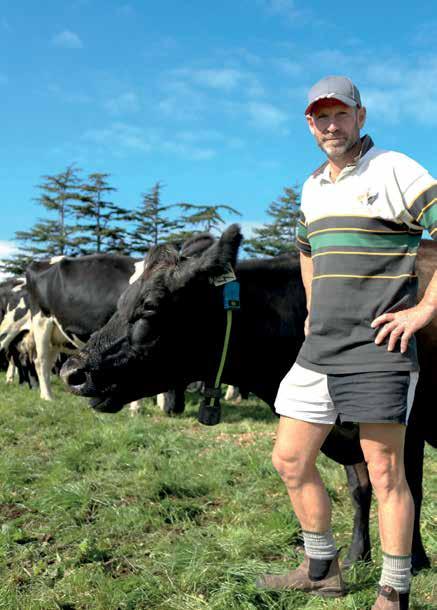

“...Collars have been priceless in helping catch issues early.”
– Justin Downing,
Waikato,
510 cows
“We get a health alert to the app on our phone when a cow’s active minutes are down, or she is not ruminating as much. We can do a quicksort and draft her out when she comes into the shed so we can visually inspect her,” says Justin.
from each system selected comprising the same make up of Holstein-Friesian (3), HolsteinFriesian x Jersey cross (3), and Jersey (3). Van der Zeijden took full-milkings samples at nine pivotal stages of the milking season – three at the beginning of the season, three in the middle, and three towards the end. Samples were also categorised by the day in the lactation stage the cow was in on the day of sampling (early, mid, and late). The TAD cows had milk from the two milkings combined. She says many factors can affect protein composition, including the time in the season and the lactation stage of the cow, from calving to drying off time when protein and fat increase as milk yields decrease.
“The system has picked up at least two cows that were having issues that the team wouldn’t have otherwise known.“It meant we were able to get ahead of the issue before it became a real problem. One of them had mastitis which we were able to catch early and treat,” says Justin.
DAIRY NEWS MAY 14, 2024 NEWS // 7
Rabobank’s Todd Charteris says the bank’s sustainability efforts are largely focused on supporting its clients to reduce their emissions.
Talk to us today about getting collars on your herd www.sensehub.co.nz Copyright © 2024 Merck & Co., Inc., Rahway, NJ, USA and its affiliates. All rights reserved. NZ-NON-240400005
This product is not intended to diagnose, treat, cure, or prevent any disease in animals. For the diagnosis, treatment, cure, or prevention of disease in animals, you should consult your veterinarian. The accuracy of the data collected and presented through this product is not intended to match that of medical devices or scientific measurement devices. ® Registered trademarks.
Couple’s Ahuwhenua win 57 years ago still tasting sweet!
THIS WEEK the winner of the prestigious Ahuwhenua Trophy for the top Māori Dairy farm will be announced at a gala dinner in Hamilton.
Over 700 people are expected to attend this function, including many dignitaries from Māori royalty to top politicians and some of the big names in the dairy and agribusiness sector.
There’ll also be family of the two finalists, Wairarapa Moana Incorporation and the Whakatohea Māori Trust Board.
Besides the present finalists there will be many past winners of this competition at the awards function. Ahuwhenua had its begin-
nings back in 1933 when the great Māori leader Sir Apirana Ngata and the Governor General at the time, Lord Bledisloe, decided the best way of encouraging Māori to improve their farms was to hold a competition.
One of these past winners is George Hopa and his wife Pani who won the competition for the best dairy farm back in 1967. George and Pani will be at this year’s awards and will proudly be showing off the medal they were presented with that year. During the recent field days that each of the finalists held, the pair were feted by the organisers as they showed their medal off to those at these events.
George says he took over the farm when his mother moved from

Tauhei near Morrinsville in the Waikato to Hamilton.
“I was encouraged to come back to take over the dairy farm. I didn’t really want to. I wanted to be a cabinet maker. But I took over the farm and then met my wife,
married and we became farmers,” he says.
George says he and his wife were encouraged by the then Department of Māori Affairs to enter the competition because they could see that there was potential for us to be able to compete in the
competition. They milked 155 cows on 150 acres of land, which was quite big for that time. He says they had the highest production per cow and produced the highest amount of butterfat of all the entrants that year.
“This is what won us
the competition,” he says.
The judge of the competition at the time, one Mr Murray, described George as “a hard-working farmer of lands that were the toughest in the region”.
He went on to say, “George and Pani’s stock were of the highest quality and his management practices were sound”. Judge Murray added that George’s buildings were “well-kept and his farm implements clean and well stored”.
George can trace the land he farmed back to the 1600’s to the Ngati Waiwere people. They were the original owners of the land on which Hamilton city is now built. He says the land at Tauhei was confiscated by the new settlers in 1864, but in 1885 some
CANADA’S FLAGRANT DISHONESTY
DEEPLY CYNICAL and completely illogical. That’s how Kimberly Crewther, the executive director of DCANZ is describing the Canadian government’s flagrant breach of international trade law in refusing to open its market to New Zealand dairy exports.
She says Canada’s actions have already cost the NZ dairy industry $120 million and are putting at risk over a billion dollars in dairy trade to NZ.
“Canada is a recidivist breaker of international trade rules,” she told Dairy News
The issue is about Canada’s refusal to comply with the rules of
the Comprehensive and Progressive Agreement for Trans-Pacific Partnership (CPTPP), blocking dairy exporters’ access to its market. Access to Canada’s market was a condition of CPTTP membership and it refused to comply; then NZ won a dispute hearing, but this has also fallen on deaf ears in Canada.
This prompted Trade Minister Todd McClay last week to blast Canada, saying its actions were cynical and that NZ was seeking further legal advice to see what action could be taken to force the Canadian government to honour and comply with the rule of CPTTP.
“Canada’s ongoing failure to meet
its legal commitments is disappointing, but we have no intention of giving in on this. We back our exporters and we will defend hard-won free trade agreement commitments,” he says.
Driving the Canadian government’s position is the power of its dairy lobby, notes Crewther. She says she’s had a meeting with them which was simply a “robust discussion” with no outcome.
By comparison to NZ, the Canadian dairy industry is small. There are just 1.3 million cows on nearly 10,000 farms and the average herd size is a mere 89 cows. But in Canada’s case it appears the size is not

in the number of cows – rather the number of vocal and politically active farmers. They have clearly got their government in the palm of their hand and it’s election year there as well, so no surprises.
Crewther says the actions of Canada’s protectionist policies in dairy have much wider implications for international dairy trade. She says Canada’s dairy exports are subsidised, which severely disadvantages NZ.
“What they are doing is not only causing harm to us as a trading partner, but they are also shortchanging their own consumers with higher than necessary dairy prices
land was handed back to their hapu, land on which the farm now stands.
George and Pani still own the land but have leased it out to another farmer who runs dry stock and grows maize on the land. But while he personally no longer farms that whenua, he never forgets the pride in winning the Ahuwhenua Trophy nearly 60 years ago. Seeing the trophy at the field days brought a tear to his eye.
“When we won the trophy, they took a photo of us with it and that photo is in our bedroom and we lie in bed and have looked at it through all those years. We have been married 66 years and the photo has been with us since 1967 in all its pride and glory,” he says.
Canada,” she says.
Crewther says by flouting international trade rules and the dispute process under CPTTP, there is growing concern that Canada’s actions are diminishing the overall value of this important trade agreement.
This view was echoed last year when Ministry of Foreign Affairs and Trade (MFAT) deputy secretary trade and economic, Vangelis Vitalis, said frankly that Canada’s approach to administering its dairy quotas is protectionist and undermines the market access agreed between CPTPP parties. – Peter Burke




DAIRY NEWS MAY 14, 2024 8 // NEWS
PETER BURKE peterb@ruralnews.co.nz
@dairy_news facebook.com/dairynews High quality innovative and reliable machinery - robust and easy to maintain. Contact Eric Crosby 027 838 7990 CAMBRIDGE | ŌTOROHANGA | ROTORUA | TAUPŌ www.gaz.co.nz Single/double auger From 7m3 to 35m3 Molasses and mineral intake tubes for dietary requirements with front facing conveyor with side shift. Teaser rollers placed at door to break up clumps. 2 speed main gearboxes. Full chassis for strength. DIET FEEDERS Autumn SpecialsSingle auger starting from $79,900+GST * Terms & conditions apply. QUALITY DIY FLOOR REPAIR SOLUTIONS EPOTREAD SL250 T: 0800 542 542 W: www.regiscoatings.co.nz CRETEX SL CRETEX TR Durable and Hardwearing Non-toxic and Waterbased Incredible Adhesion Excellent Chemical Resistance EPOXY SCREED FOR ERODED FLOORS SELF LEVELLING EPOXY RESIN TROWEL GRADE EPOXY FILLER Non-toxic, Solvent Free High Strength, Rapid Cure Excellect Chemical Resistance Ideal for cow yard floor cracks Incredible Adhesion Rapid Cure Sets Extremely Hard in 6 Hours Excellent Chemical Resistance
George Hopa and his wife Pani with the medal they won for the best dairy farm back in 1967.
Investing for a positive future
UNDER ITS innovation strategy, Craigmore Sustainables says it is collaborating with new innovators of technology across sustainability, people, animals and business management to enhance New Zealand’s dairy sector.
The company says it is investing in programmes designed to help both the business and the sector maximise opportunities and address challenges.
The sustainability work includes improving water quality, reducing greenhouse gas emissions and increasing biodiversity. This includes work to support endangered species.
Craigmore’s general manager farming Stuart Taylor says the company feels it has a responsibility to invest back into the New Zealand dairy sector.
“As a business with scale, we can tap into expertise across multiple disciplines and be an early adopter of technol-
ogy to help create space for other dairy farmers to take up new solutions,” Taylor says.
“With 22 farms in New Zealand and partownership of other farms, we can spread the cost and risk of trying new things. We’re up for anything we can do to help farmers and the sector to progress.”
Craigmore is working on a plan to share key lessons with other farmers. As a fifth-generation dairy farmer, Taylor believes there is nothing more important for New Zealand farming than to continue running successful businesses to contribute to the economy and local communities, while becoming even more sustainable into the future.
It has unique environmental work in development, including protecting the Canterbury Mudfish (a small native freshwater fish) and increasing the num-
BUILDING LEADERSHIP
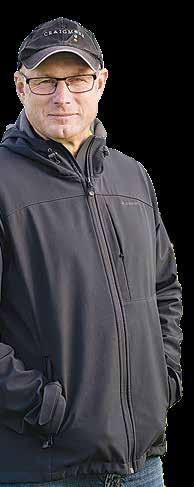
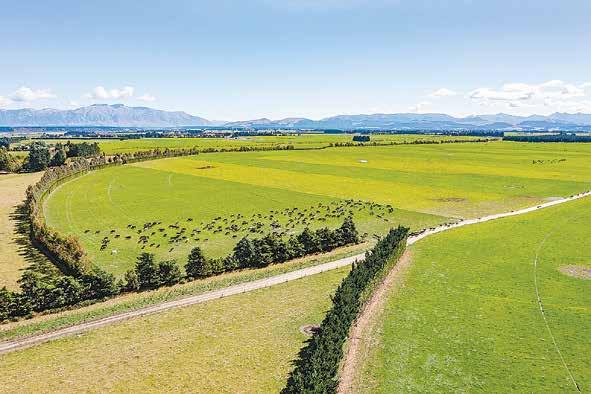
bers of endangered native skinks.
“Our farm environment plans are tailored to each farm and set out the ways in which we can continue to reduce our environmental footprint,”
Taylor says.
“This includes plant-
CRAIGMORE SUSTAINABLES say it is committed to investing in professional and career development for its farm managers and employees. Working with people such as Chris Parsens, Ellen Ford and Jon Lasenby the company runs a high-performance teams programme, which Stuart Taylor says delivers transformational results for the company’s leaders. Long term, Craigmore hopes to transfer the process over to primary industries.
“We challenge our leaders to be self-aware and lead our people for a positive future for our business and their personal lives. People are one of the most important parts of a farming business and we’re committed to developing farm teams that succeed and love what they do.”
When setting a farm system, Taylor says he looks at the farmer’s natural style and the farm’s characteristics, including geography, climate and assets. The farm system is modelled to create success for the farmer and success for the farm.
“Every farmer is different. To attract the best people we have created flexibility around how we run our farms and how we employ people. We talk about what they want out of life, their career aspirations and risk profile, and remunerate people with situations that create win/ win outcomes for the person and the business.”
Employment options include managers and contract milkers with or without equity, 50/50 sharemilkers and, in one case, a joint venture lease.
“We want to attract the best people and remunerate them in a way that helps them meet their career and life goals,” Taylor says.
“Also, we introduce innovation onto farm by looking for ‘passion-projects’ – once a farmer is succeeding on the farm, (great teams, cows, farm presentation and financials), we work closely with them to introduce an innovation based around their passion. An Innovation might enhance animal welfare and performance, the environment, people or farm system performance.”
Craigmore was founded in 2009 by New Zealanders Forbes Elworthy and Mark Cox, who believed the dairy sector was highly innovative but needed capital to invest in the trial and testing of technology to fast-track change in the sector.
“We have a strong focus on delivering a positive future for New Zealand’s primary sector and our rural communities,” Taylor says.
ing native trees and plants, which helps increase biodiversity and attract native birds. We’re planting alongside waterways which helps improve water quality and provides shade for fish and insects.”
The company’s strat-
egy also focuses on trialling new solutions to help reduce greenhouse gas emissions, including new feed types and naturebased solutions.
It is also piloting EcoPond, a breakthrough technology to reduce methane in a first for the
New Zealand dairy industry.
The cutting-edge technology at the farm, which milks 1100 cows, is the result of a collaboration between Ravensdown and Lincoln University.
Taylor is one of 400 environmentally focused farmers in the Dairy Environment Leaders (DEL) network, created by farmers, DairyNZ and the New Zealand Farm Environment Trust in 2007. The network aims to empower leadership and create opportunities to support and share onfarm actions to reduce the environmental footprint.
“Craigmore farm managers take part in local catchment groups where they can, supporting community initiatives to reduce their environmental footprint,” Taylor says.
Taylor says Craigmore’s 400-hectare dairy farm Glen Eyre in Oxford, North Canterbury, is the first commercial dairy farm in New Zealand to adopt EcoPond, an effluent treatment system that removes virtually all methane emitted from effluent ponds with an additive normally used in the treatment of drinking water.

DAIRY NEWS MAY 14, 2024 AGRIBUSINESS // 9
Craigmore Sustainables general manager farming, Stuart Taylor.
Craigmore Sustainables Te Awa dairy farm in Te Pirita, Canterbury.
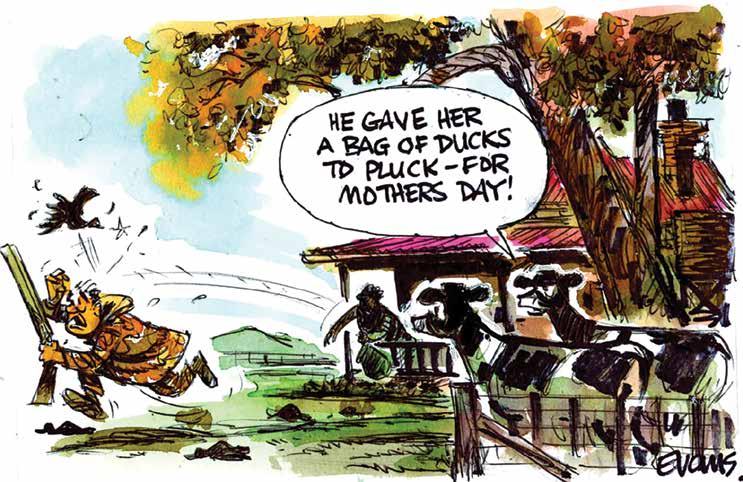
Meat the Need!
A PLUG is overdue for Meat the Need, who is currently fundraising to help supply more meals to families in need. The farmerled and locally run charity facilitates donations of livestock, milk and cash to turn into mince and milk meals.
It’s the only charity in the country to distribute a consistent supply of nutritious protein to 115 food banks and community organisations nationwide, with more than two million meals delivered since July 2020. General manager Zellara Holden says, “The demand for our services right now is currently unprecedented. We have more than 100 food banks and community organisations on our wait list, and we desperately need more donations to be able to help as many communities, families and individuals as we possibly can.” Anyone can make a difference today by texting “FEED” to 2662 to donate a meal for $3.
Alternatively for farmers, the charity facilitates donations of livestock, milk, virtual livestock and cash with 100% of donations turned into mince and milk meals.
Monopolised
NOT EVERYONE will agree with former ‘Minister of Everything’ Stephen Joyce on his summation of Fonterra when writing recently about NZ’s tendency to legislate for monopolies: “We allowed Fonterra to be created, with its near-monopoly over milk collection, and have since been on a long journey of dissatisfaction with its performance, up until quite recent times.”
He also mentions the building supplies industry. But Joyce definitely has a point when it comes to the big-four banks: “One of the stark revelations from the ComCom’s analysis is that a large bank can hold 15 per cent less capital of its own behind each loan it makes than a small bank must. That puts small banks at an immediate disadvantage to the large ones, as the capital their shareholders provide is effectively regulated to make a lower return.”
As he says, the big four are “fat and happy” and unlikely to face serious competition under current law.
Breathalyser for cows
THE IRISH have come up with a novel way to measure cow belching, which is said to account for 70% of total agriemissions in Ireland.
While Jack Pilkington and Alan O’Donovan, co-founders of County Offaly-based Agri Data Analytics, don’t dispute this figure, they say it would be way more accurate if “bovine belching” was measured more precisely.
They suggest their answer to the problem, a breathalyser for cows, could give greater insight into the problem, in Ireland and further afield, helping determine if farmers are shouldering disproportionate blame for climate change.
The system works by automatically reading a cow’s identity tag when it approaches feed, then the breathalyser starts drawing air from the feeding trough once they begin to eat. Traditional handson testing can be stressful for livestock, something the duo wanted to avoid, so they encouraged the cattle to comply with testing voluntarily, using feed to entice cattle to the trough.
Substitute for cow’s milk?
SCIENTISTS CLAIM to have found a new way to make a substitute for cow’s milk that could have a radical effect on the dairy industry. Called precision fermentation –creating cow protein in the lab – it could in theory replace dairy ingredients, which make up a significant proportion of New Zealand’s export market.
“Precision fermentation of dairy proteins creates a very easy pathway for creating proteins without using dairy cows,” says University of Otago Professor Hugh Campbell explained.
But, like Milking It, Federated Farmers doesn’t see parents ever being happy putting labgrown meat and milk in their kids’ lunchboxes. Which is the reason the fake meat industry is failing – the ‘yuck’ factor of protein made in a test tube.
EDITORIAL
O Canada!
POLITICIANS THE world over have as their priority – get elected and stay elected. What they do after that for their fellow citizens is a by-product of their ego-driven goal to get into power. This is well illustrated in that famous comedy/’documentary’ Yes Prime Minister, where the first consideration to making any decision depends on whether it will win or lose votes.
This philosophy extends well beyond the jurisdiction of many so-called ‘friends of NZ’ and manifests itself particularly when it comes to international trade. Countries talk up their geopolitical, cultural and historical friendships – even mateship, where longtime allies have spilt blood together in war.
But this all goes out the door when it comes to international trade and over how many years, I don’t know, getting elected to enjoy the baubles of office overrides any consideration of mateship etc. NZ has had to battle this hypocrisy and ‘about-faceness’ for decades. Think Britain, the US and the EU. Now Canada is on our blacklist as a rogue recidivist protectionist country who, against all international trade rules, is blocking NZ from exporting dairy products there. Canada signed up the CPTTP – a trade group based around the Pacific rim – to trade freely with all members. But while Canada portrays itself as a ‘free trader’ and ‘friend’, the reality is quite different. Canada has a peasantlike dairy industry, with average herd size of 89 cows, but a lot of small farmers with big mouths and egos, and, seemingly, power. They have managed to pressure their government to break international trade rules and ruin relationships with close friends to protect their subsidised and unsustainable dairy industry.
The NZ Government has won a case against Canada and is now looking at other legal options.
By refusing to comply with the international trade rules, Canada in effect has stolen about $120 million dollars from NZ dairy farmers. They must be taken to task for this.
Head Office: Lower Ground Floor, 29 Northcroft St, Takapuna, Auckland 0622
Phone 09-307 0399.
Postal Address: PO Box 331100, Takapuna, Auckland 0740
Published by: Rural News Group
Printed by: Inkwise NZ Ltd
Contacts: Editorial: sudeshk@ruralnews.co.nz
Advertising material: davef@ruralnews.co.nz
Rural News on-line: www.ruralnews.co.nz
Subscriptions: subsrndn@ruralnews.co.nz
Publisher: Brian Hight Ph 09-307 0399
General Manager: Adam Fricker Ph 021-842 226
Editor: Sudesh Kissun Ph 021-963 177
Machinery
Editor: Mark Daniel Ph 021-906 723
markd@ruralnews.co.nz
Reporters: Peter Burke Ph 021-224 2184 peterb@ruralnews.co.nz
Subscriptions: Julie Beech Ph 021-190 3144
Production: Dave Ferguson Ph 027-272 5372
Becky Williams Ph 021-100 4831
Digital Strategist: Jessica Marshall Ph 021 0232 6446
AUCKLAND SALES CONTACT: Stephen Pollard Ph 021-963 166 stephenp@ruralnews.co.nz
WAIKATO & WELLINGTON SALES CONTACT: Lisa Wise Ph 027-369 9218 lisaw@ruralnews.co.nz
SOUTH ISLAND SALES REPRESENTATIVE: Kaye Sutherland Ph 021-221 1994 kayes@ruralnews.co.nz


DAIRY NEWS MAY 14, 2024 RUMINATING
IT... 10 // OPINION
MILKING
Dairy News is published by Rural News Group Limited. All editorial copy and photographs are subject to copyright and may not be reproduced without prior written permission of the publisher. Opinions or comments expressed within this publication are not necessarily those of the staff, management or directors of Rural News Group Limited.
• Printed by Inkwise • Distributed by Reachmedia
A key part of the team
HAVING A trusted feed supplier as part of their team is a vital part of a Eureka family’s farm business – especially now that they’ve shifted to autumn calving.
Dan and Abbie Hinton are 50:50 sharemilkers, milking 500 cows on the 170ha Hinton family farm in Eureka, near Hamilton. Dan says they have reduced their herd size from 580 to 500 but have focused more on production, which has lifted from 950 kgMS/day to 1050 kgMS/day, with an annual target of 240,000 kgMS total production.
Since he changed from spring to autumn calving, the feed strategy on the farm has become more critical, milking cows through winter when the grass isn’t growing.
“We’re a pasturebased system (system 3,
upper end) and we add feed as required,” says Dan. “We’ll feed maize and grass silage supplemented with dry feed from Swaps. Bought-in feed is a necessity for us. If you put it in at the right time, it protects you from weather variations.”
With help from his J Swap Stockfood sales consultant, Jo McLachlan, he has adjusted the mixed ration he buys from Swaps to help boost cow condition and per cow production – feeding less, but feeding more protein per ration.
Raised on a dairy farm, Jo has been a sales consultant for Matamatabased J Swap for 17 years now and was their first sales person when Swaps first got into the stockfood business. Back then, palm kernel expeller (PKE) as a stockfood was new in NZ and Jo has seen huge growth in the business over 17

years, watching it evolve from mainly selling PKE as a commodity to selling mixed supplements tailored to a customer’s farm.
The Hintons first started buying feed from Swaps during the 2008 drought, after being let down by another stockfood supplier. The working relationship with Jo has been a constant ever since and she’s well past needing an invite to drop
in for a cuppa. Dan now advance books 12 months supply with Jo, using about 600 tonne annually. The exact makeup of the mixed ration is varied according to what Dan’s farm adviser says the cows need, balanced with feed prices and availability, which Jo advises him on.
“I can just ring Jo and say ‘I need food!’ and she’ll sort out the best mix at the best price,”
says Dan. “I buy 12 months ahead, because our system is pretty rigid and doesn’t change too often.
“We know we’re going to be feeding 500 cows 2.5kg per day.”
The Hintons have a silo and in-shed feeding system, along with a feedpad next to the shed. “Before we built the feedpad, we estimated it would reduce waste by about 30%,”
says Dan. “The idea was that we’d buy-in less feed, but what’s happened is we buy the same amount, but produce about 30% more milk.
“During the conversion to winter milking, the feed pressure was massive and we were buying in way more PKE than we do now, but it got the cows through and they all calved in good condition and are now producing the most
they’ve done.
“PKE is the perfect substitute for grass, there’s no phasing in and the beauty is, it’s always available. But we’ve evolved along with Swaps in moving from feeding a commodity to a tailored mixed ration with added goodies, based on what we need. We can dial up the protein content if our milk docket suggests the cows need more.”
Jo says not all farmers work out in advance the volume and nutrition profile of supplements they’re going to need as accurately as Dan, who knows exactly what he needs to add-in throughout the season.
“Grass is your main variable and it can let you down,” says Jo. She says Dan tells her what the nutrition data says the cows need, and she finds the best solution. She says her job is to make it easy for her customers.
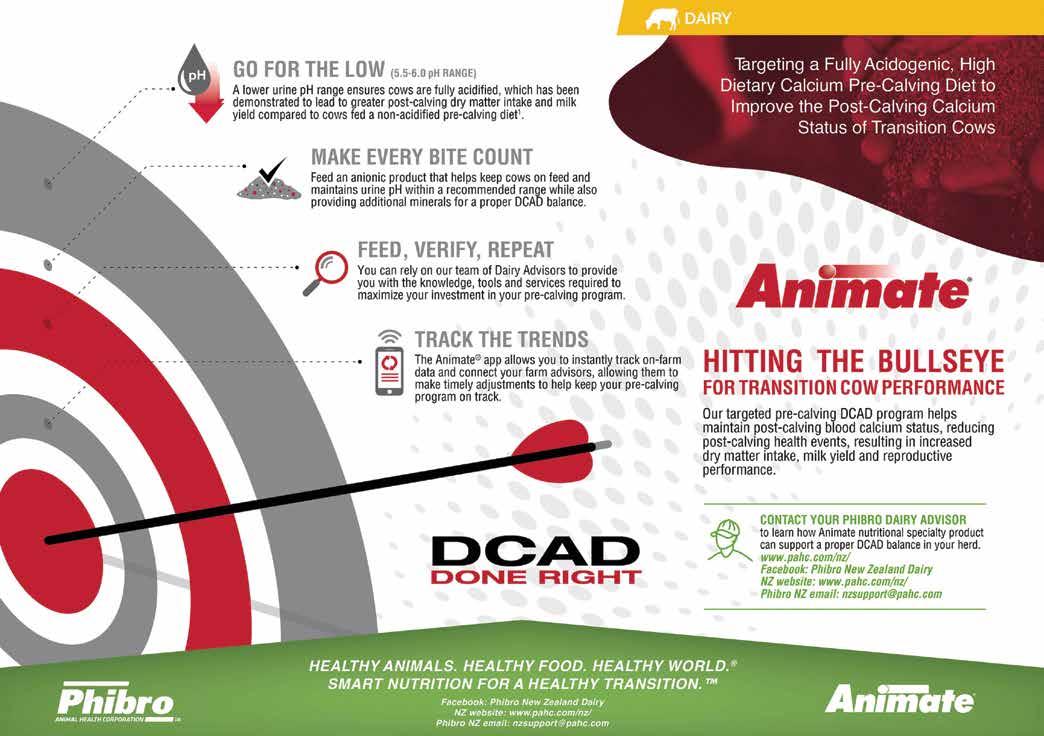
DAIRY NEWS MAY 14, 2024 MANAGEMENT // 11
ADAM FRICKER
Jo McLachlan, sales consultant for J Swap Stockfoods (left) and Eureka farmer Dan Hinton.
Couple who never gave up their farm ownership dream
ATIAMURI FARMERS
Paul and Lesley Grey never gave up their dream of owning their own farm – and in 2020, that dream came true.
“Our kids are all grown up, so it wasn’t a matter of buying a farm to stay farming, it was a matter of finding a farm we liked,” Paul says. That ideal farm was Sue Pembridge’s 77ha farm in Atiamuri. The couple sharemilked in Mangakino before selling their large herd in 2015. They settled in Tokoroa for a short stint of townie life while they searched for their ideal farm. Five years later the milk price recovered and there was an opportunity to buy Sue’s farm.
The re-establishment of the Grey’s herd began in 2020. They purchased a herd of 200 Holstein Friesian cows, with a few crossbreds. Over four seasons they have averaged 91,000 kgMS per year, around 460470 kgMS per cow. This season they are on track for a record-breaking

FERTILITY IS KEY
UDDERS, TEMPERAMENT, and fertility are the traits Paul Grey says they mate for in their herd.
“Fertility is especially important,” he says. “It’s heart breaking when you can’t get a good cow in-calf.
“While we are building up this herd, my priority is to focus on improving the udders throughout the herd,” he says. “And I always make sure I’m picking the bulls with the better fertility trait. I also consider good feet, legs, and stature; I also don’t want them too big.”
As this is only the Grey’s second season with their own stock coming through, it is too soon to tell which sires are performing well.
“My initial focus was simply to get cows in calf, but I look forward to fine-tuning my selections for replacements over the coming seasons,” Paul says. “We have bought the odd heifer from Wayne and Leeanne Taylor over the last few years, two of which are fantastic producers.”
One of these is Muritai Chuck Lydia S3F GP84, sired by Hillbrae
Gaunt Chuck-ET and out of Muritai H-House Lydia S2F.
Paul’s heifer Lydia has BW 406, PW 442, and LW 477. Lydia’s production to date (from her January herd test results) showed that over 194 days in milk she has produced 4,210 litres of milk (185kg fat, 163kg protein).
“We have a crop of calves coming through that were also sired by Chuck, but after his fertility trait changed for the negative, we shied away from using him anymore,” Paul says. “But I must admit after milking Lydia and being incredibly impressed by her, I am seriously considering using Chuck again.”
CRV bull Hillbrae Gaunt ChuckET has a fat BV 44, milk BV 521 and his udder overall sits at 0.95.
The other standout young cow Paul bought from Wayne and Leeanne is Muritai Omah Wylow-OC S3F GP83. Wylow has a BW 381, PW 577 and LW 765. Her production to date (from her January herd test results) showed that over 201 days in milk she produced 6244 litres of
milk (250kg fat, 240kg protein).
Paul and Lesley managed to keep one cow from their large herd, Valden MOM Treasure-ET VG88 –better known as the “horse”.
Treasure is now thirteen-yearsold, and her best production season saw her in milk for 305 days, producing a total of 11,433 litres of milk (481kg fat, 408kg protein).
The other top producers in their herd include Maranui Beamer Madi S0F VG87, who in her four-year old season (2022/23) had 274 days in milk, producing a total of 7001 litres of milk (326kg fat, 278kg protein.)
Another notable cow is Maranui Rapture Rim S0F VG88. In her seven-year-old season (2020/21) had 291 days in milk, producing a total of 6387 litres of milk (381kg fat, 265kg protein.)
And, Maranui Kels Moira S0F VG86 had 289 days in milk in her six-year-old season (2022/23), producing a total of 7,247 litres of milk (379kg fat, 391kg protein.)
total of 95,000-97,000 kgMS.
Paul’s passion for breeding pedigree Holstein Friesians started when his father took a liking to the breed and established the Maranui stud in the 1970s.
He initially joined HFNZ as an associate member in 1977 and he vividly recalls his first pedigree cow that he bought, Longlands Atlas Karen, bred by Phil Jones.
When they bought the Atiamuri farm, Paul considered trying something new and looked into purchasing a Jersey herd. But his deep love of Holstein Friesians took hold and they purchased a Holstein Friesian herd.
APPRECIATING THE BREED
RAISED AROUND Holstein Friesians, Paul Grey loved their looks but over the years he has come to appreciate more about the breed.
“When I was fourteen, I probably didn’t understand the benefits of a Holstein Friesian – they just looked a bigger and better cow,” he says. “But the reason I have stuck with Holstein Friesians is because for not much more money when you buy a herd, you’ve got a cow that has a better residual value when her milking season is finished; you’ve got more options for calves; and at our age we don’t need to milk as many to produce what we do.”
Although Paul has been milking cows since he was thirteen years old, he is not prepared to slow down –yet.
“We started off with a timeframe of five years,” he says. “We are now four seasons in with one more season to go, and then we will re-evaluate what we do.
“The personal goal would be to get these cows up to 600 kgMS per cow – that would be an achievement I’d be proud of – but one that could take a few more years. We’d have to build something with a bit more engine room with around 550-600kg liveweight, which can’t be achieved with the standard LIC or CRV genetics.”
Both Paul and Lesley feel the work they’ve put into the farm and their herd is just starting to come to fruition. Paul is incredibly enthusiastic about what he does and loves to milk cows.
“I’d personally like to milk cows till I’m sixty-nine,” he says. “I work on the theory that retirement sounds all good and dandy, but it’s actually pretty damn boring, too.”
FARM FACTS
■ Owners: Paul & Lesley Grey
■ Location: Atiamuri, Bay of Plenty
■ Farm size: 77 hectares
■ Cows: 200 (95% registered Holstein Friesians)
■ Production: 91,000 kgMS
■ Stud name: Maranui
Although the farm is primarily a pasturebased system, the Greys have a feed pad, feeding about 150 tonnes of palm kennel and 150 tonnes of maize as well as a bit of DDG (Dried Distiller Grains).
“The Holstein Friesian cow does take more to feed than other breeds, but she will go a lot further,” Paul says.
Paul and Lesley do about seven weeks of AI to kick off mating. Paul is a firm believer that the extra week is worth it when you consider the price paid for a ten-day CIDR programme.
“We start calving around July 15 and still have AI calves coming through till the end of September, but that doesn’t bother me,” he says. “I find this way I use less CIDRs, and I never have trouble selling the
extra heifer calves because they’re Holstein Friesian.”
For the first season on the Atiamuri farm, Paul went with LIC for semen.
“I needed something simple for the first season on this farm with my limited contacts,” he says. Since then, they have slowly transitioned to CRV, with the most recent mating entirely to CRV semen.
“Back when we had our bigger herd, we did nominate with CRV, but I am excited to get more adventurous and broaden our horizons,” Paul says. “This is an advantage of having a smaller herd; I can be more precise, and less about numbers.”
DAIRY NEWS MAY 14, 2024 12 // MANAGEMENT
ANNE BOSWELL
Atiamuri dairy farmers Paul and Lesley Grey never gave up their dream of owning their own farm - and in 2020, that dream came true, after five years of searching for their ideal property.
Ferdon sale tops $24,000
FAMILY AND solidar-
ity shone through at the 75 years of Ferdon sale in Otorohanga last month.
The family hadn’t hosted an on-farm sale for 29 years, and not only was there an intense sense of family, the industry turned out in force to support one of New Zealand’s highest performing Jersey herds.
Australian auctioneer Brian Leslie pointed out that the three breeds in the sale – Jersey, Holstein, and Ayrshire – were all represented in the top three prices, which ranged from $20,000 to $24,000. The sale came at the end of a busy calendar this month for the registered market – with Busybrook Holsteins and Lawwal Holsteins both averaging more than $9000.
Some had wondered how deep everyone’s pockets would be by the time Ferdon rolled around. They needn’t have worried – the sale averaged $7305 overall. Between the three breeds and two consigners, the cows averaged $9550, the in-calf heifers averaged $7133, and the yearlings and younger calves averaged $5500.
The top price Jersey and the top price of the sale came on the last lot. She was knocked down to Peter and Claire Hansen, of Lilac Grove Jerseys, at Fernside in Canterbury. Ferdon Fizz Viyella EXC sold for $24,000 due to
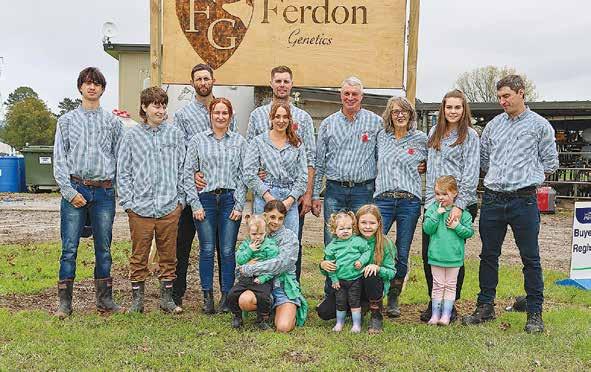
TOP PRICE Ayrshire was Lot 19, Ferdon Bigstar Goldie V9-9, who sold for $20,000 to Heavenly Moos, from Ohinewai.
Goldie was Intermediate Champion on her debut at the Waikato show in 2023, and one of her new owners – 17-year-old Jacoba Gread – was thrilled to work with the three-year-old during the sale preparation, and to take her home afterwards in partnership with her parents, Mark and Kylie. Her emotional reaction at the end of the day was about so much more than many realised.
Mark is in remission following surgery (and follow-up treatment) to remove a brain tumour in April 2021. The shadow and the uncertainty it had cast over a family was eased a little more when the hammer fell, and the family looked towards their future.
“I was over the moon that we had gotten her, but sad that mum wasn’t in the photo because she will be our cow, rather than my cow,” Jacoba said.
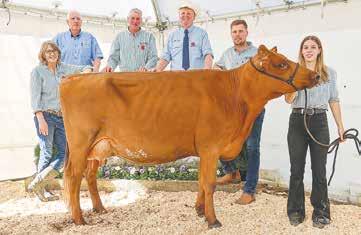
Eight days before Ferdon’s sale, Mark broke his leg, and an infection of the back of that injury had kept him in hospital until two days before the auction. It also meant both parents had left for a doctor’s appointment by the time photographs were taken.
“We were sold on her without seeing her temperament, but after watching her be clipped, washed, and prepared through the week, I knew I didn’t want to leave without her,” Jacoba said.
“Another thing that makes her so special to us as it kind of shows that there’s always good things waiting for you at the other side of life’s challenges.”
Jacoba, who is studying for a Bachelor of Business (majoring in agribusiness) in between helping out at home, said they are excited to now be able to work with Goldie every day in their mixed herd, which includes Holsteins, Ayrshires, Jerseys, Crossbreds, and Linebacks.
“I had a member of the family that we lost before we got a female, and I just felt that it got us back into that family.”
sexed Caspian in July. In 274 days continuing she has 645 kgMS up with a 5.8% fat and 4.2% protein. She is headed south in a three-way syndicate between Lilac Grove Jerseys (Fernside), Sara and Stu Russell (Ashburton), and Graham Smith and Debbie Mercer (Invercargill). The underbidder came from Australia.
Lilac Grove’s Peter Hansen said he had three lots that he was interested in, but the Viyella was his main quarry.
“I had a member of the family that we lost before we got a female, and I just felt that it got us back into that family,” he said. “It was a worry that if you held on, you might miss out and have nothing, but it was a calculated risk. She’s such a nice balanced cow from a deep family – cow families are everything.
“She is so dairy, and that production of more than 7000 litres was part of our thinking.”
He says the sale was a shot in the arm for the Jersey breed.
“I thought this sale brought a lot of energy to the industry which has been missing in the Jersey circles. It was hard to know if it would go close to matching the Holstein sales that have been held recently, but I think it did
and Warren and Michelle and their family should be commended for what they’ve done for the Jersey breed.”
Warren Ferguson says they were rapt with the average and particularly pleased that Viyella goes to the select herd of Lilac Grove, which supplies raw milk to the community in and around Rangiora. “You often hear lots of talk before a sale, and often people don’t always follow through. It’s nice she’s going to Peter and Claire because we know that she will be appreciated and looked after,” says Ferguson. One lot sold to the United Kingdom, and she will continue to reside at Ferdon on behalf of Simon Gaskin, of Brighton, in East Sussex. Simon manages sponsorship at the All England Jumping Course, at Hickstead.
He visited Ferdon several years ago and has since bought three animals at auction from the family at different times. This time he invested in Lot 73, Ferdon Askin Caramel, an August 2023-born Brookbora Valentino Askin daughter, for $8500. “She is out of one of our favourite cows, and Simon had picked her out as the one he wanted. He knows the families we have here,” Ferguson says.


DAIRY NEWS MAY 14, 2024 ANIMAL HEALTH // 13
DIANNA MALCOLM
AYRSHIRE HELPS FAMILY HEAL
The Ferguson family before the sale started united and ready for action.
Top price Ayrshire sold for $20,000
www.dairy BREAKING NEW MARKETS & TRENDS MACHINERY RE AND MUCH MOR Check o
Get ready for Moving Day
MOVING DAY is a big day in the farming calendar and requires good planning and communication to ensure success.
For some, Moving Day not only involves shifting a household of belongings, but it also involves relocating farm equipment and animals. Early preparation is important, as is clear communication with your team, whether they are contractors, friends, or family, regarding your plans and expectations.
Careful consideration must be given to animal movements, and all farm equipment and machinery should leave the farm in a clean and disinfected state to manage health and biosecurity risks.
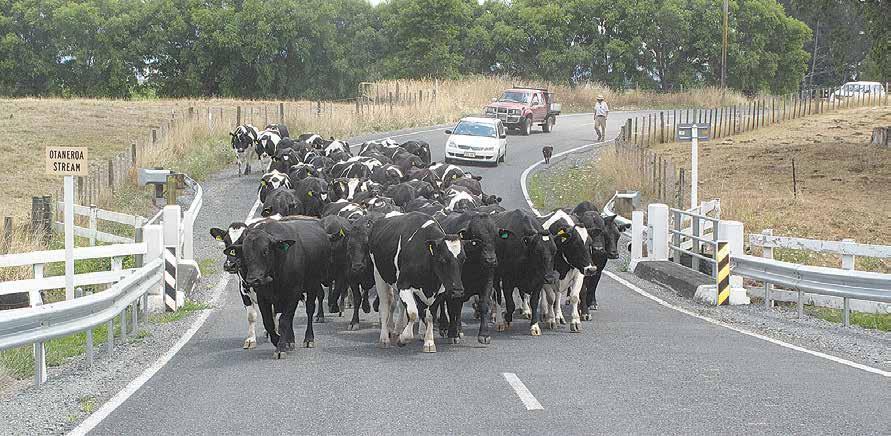
Ensure sharemilker / contract milker contracts are signed by both parties and a farm inspection
FARM OWNER
A FARM owner is responsible for:
with new farm owner, incoming and outgoing
■ Ensuring employees leave houses clean and tidy. Complete a house/s inspection for any maintenance required on current farm by end of April and arrange for any repairs and upgrades required. Check you comply with healthy home standards.
■ Completing a final house inspection with existing tenant (sharemilker and/or employees) as soon as house/s are vacant.
■ Consider whether drug testing of house/s will be required.
■ Confirm with departing and new tenants their departure and arrival times so there is no cross over between parties.
■ Check with your insurer what obligations you have in terms of inspections and what, if any, impact this could have on your insurance cover.
SHAREMILKER
SHAREMILKER AND contract milkers are responsible for:
■ Ensuring that their own house and their employees house/s have been left in a clean and tidy state to the standards agreed in the contract.
■ Consider whether drug testing of house/s will be required. If yes, arrange contractors and discuss with farm owner.
■ Completing house/s inspection with employees and then farm owner as soon as house/s are vacant, and complete house/s inspection prior to moving in on new farm.
■ Immediately discuss any issues with farm owner, agree a plan and document this.
sharemilkers, farm manager, farm advisor has been planned.
Determine your staffing needs for your new farm, start recruiting for required staff and ensure signed employment agreements are in place, alongside signed service tenancy agreements for any employees who will live on farm.
Ensure anyone coming onto the farm hasn’t been overseas in the past seven days to reduce the risk of introducing exotic organisms, especially if they have been travelling to countries with foot and mouth disease (FMD) and have been in contact with FMDsusceptible animals (e.g. farmed or wild cattle, sheep, goats, pigs, deer, llamas, alpacas).
Communicate regularly with the people

on your existing farm and the people who will be on your new farm about your plans - dates, key information etc. Ensure staff have enough time to be prepared, pack and clean in the weeks leading up to moving. If necessary, adjust rosters and hours of work.
Get in touch with your insurer well before the move - there might be more things to discuss than you think. It’s a good idea to know the physical address, building details, any plant or machinery details, and the details of your sharemilking or contract milking agreement if applicable.
Contact your utility providers (e.g. power, internet, etc) and ensure you will be disconnected and reconnected on the right dates. Take and record final power meter
CONTRACT OBLIGATIONS
ENSURE ALL body condition score (BCS), pasture cover targets or supplements on hand will be met as per the contract on takeover date. If they are not going to be met, have a proactive conversation with the other party as to what arrangement can be made to compensate:
■ Obtain third-party advice if required to reach an agreement.
■ Contract third-party to measure surplus/deficit feed inventory and quantify if required.
■ Refer to your contract which should clearly show the exact amount of feed required on hand as well as the process to follow if the actual feed inventory is different to this.
■ Ensure calves are fully weaned and are getting their daily requirements through grazing pasture prior to moving them off-farm.
■ Winter and heifer grazing contracts should clearly set out the roles and responsibilities of the animal owner and the grazier, including weight targets, feed management, animal health and transport. Understand new resource consent management requirements of new property (e.g. recording monthly water use, completing compliance forms for environment).
As a leading diagnostics company that can identify the mastitis status for every cow in your herd we’re supporting this season’s dry-off with an UDDERLY AWESOME PRIZE PACK worth up to $3,500.
Head to our website or scan the QR Code to enter: dairysmart.co.nz/prizepack
DAIRY NEWS MAY 14, 2024 14 // MOVING DAY
• Article sourced from www.dairynz.co.nz
readings for all houses at both properties.
For some, Moving Day not only involves shifting a household of belongings, but it also involves relocating farm equipment and animals.
TERMS & CONDITIONS APPLY. VISIT WEBSITE. WIN NEW ZEALAND vs ENGLAND RUGBY TEST MATCH PRIZE PACK Udderly Awesome DUNEDIN, SAT 6 JULY 2024 0800 SAMPLE // dairysmart.co.nz
Moving animals, farms come with key responsibilities
MOVING FARMS or relocating your herd to a new place comes with important responsibilities as a PICA (Person in Charge of Animals) in the NAIT system.
Moving animals and farms can be a lot to handle and cause stress because there are many things to be done. However, it’s important to follow NAIT obligations. These rules help keep track of animals in case there is a disease outbreak, making it easier to trace and manage herds effectively.
Tasks to complete before moving include tagging and registering animals, completing an Animal Status Declaration (ASD) form (elec-
tronically through online customer portal, MyOSPRI) and preparing a Declaration to Livestock Transporter (DLT), if the transporter asks for it.
Ensure your NAIT records are up to date, all animals are tagged, and completing all NAIT actions within the required timelines.
Confirm the health status of any animals that will be mixing with your animals on the new farm, and if necessary, make arrangements for testing, vaccinations etc. Keeping new animals separate for 7-14 days reduces the risk of introducing unwanted diseases.
Check there are no biosecurity restrictions or requirements on the
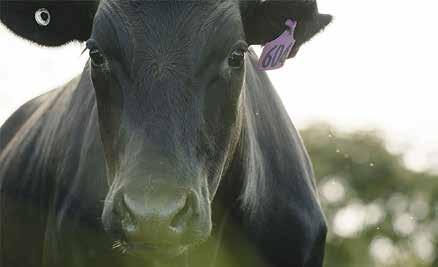
new farm, for example because of M. bovis or Tb control.
Contact your insurer to confirm you have appropriate livestock transit cover in place before you move.
If you will be drov-
ing, try to find out from local farmers if they will also be droving and plan together how you will avoid each other.
Before Moving Day, clean and disinfect vehicles and machinery thoroughly to reduce the risk
of spreading diseases, pests, and weeds.
Clean, and then disinfect, any equipment that is used in or on animals, for example drenching equipment.
Fix any maintenance issues that are your
responsibility. If they are not your responsibility then ensure whoever it is knows what needs to be done, in writing.
Ensure effluent infrastructure is left as you found it, and/or is left according to your contractual obligations (e.g. effluent pond is required to be no more than one quarter full of effluent as at 1 June). If this is unlikely to be achieved, have a proactive conversation with appropriate parties.
Clean the sheds and plant appropriately. Clean the dairy shed to a high standard of cleanliness.
This means all surfaces, vats, pipelines etc. Use only approved products.
Ensure you have clari-
fied what it is you need / want the contractor to do. Make it clear where they will be going / working and advise them of anything they wouldn’t expect that would be a risk to them.
Let them know of other activity on farm that could pose a risk to them. Advise them of farm rules (e.g. speed limits) and expectations of behaviour and of any relevant emergency procedures.
Make sure you have agreed your costs and have a written document of expectations. It is helpful for both parties to have an electronic copy and mark-up of a farm map.
• Article by DairyNZ

DAIRY NEWS MAY 14, 2024 MOVING DAY // 15
It’s important to follow NAIT obligations when moving animals. Be in touch with your closest Sales Contact Auckland Stephen Pollard Ph 021-963 166 Waikato & Wellington Lisa Wise ............ Ph 027-369 9218 Christchurch Kaye Sutherland Ph 021-221 1994 To be in this special report contact your advertising representative now to promote your products and/or service to all NZ dairy farmers and sharemilkers. FEATURE: 28 MAY BOOKING DEADLINE: 15 May MATERIAL REQUIRED: 21 May SPECIAL REPORTS NATIONAL FIELDAYS GOING TO THE FIELDAYS? Better make sure farmers know where you’ll be and what you have to offer, then. Dairy News National Fieldays feature is the best place to prime farmers and ensure you maximise your Fieldays spend.
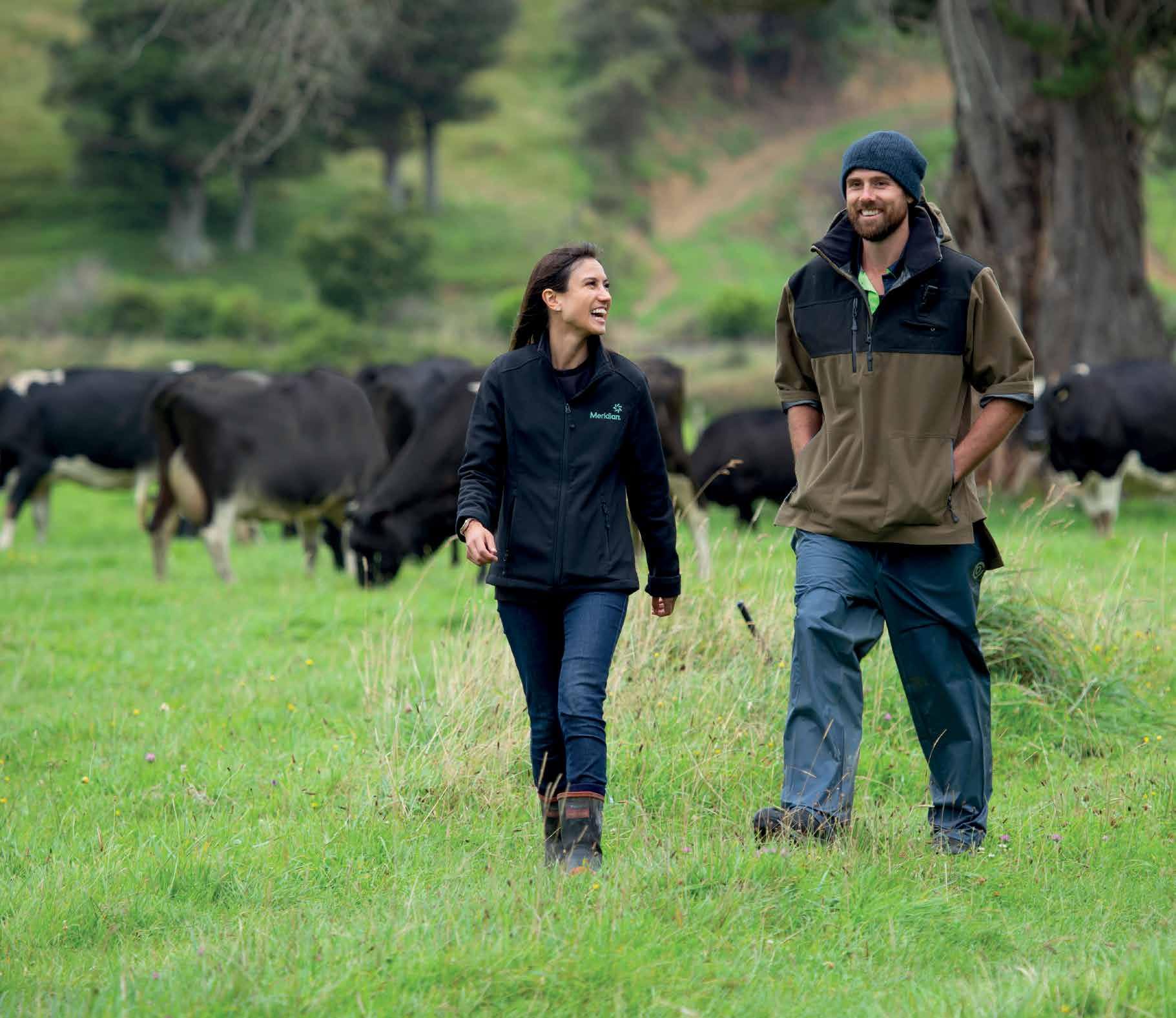
We’ll sort the power before the cows come home.
Our Agribusiness team are here to help this Moving Day with up to $300 credit per ICP*. Fill out our quick form using the link or QR code below.

Moving farm?
*Terms and conditions, break fees and eligibility criteria apply.
Scan or visit: meridian.co.nz/MoveFarm

Landpower opens ag retail hub
LANDPOWER RECENTLY opened its new agricultural retail hub in Yaldhurst, Christchurch.
Nicola Grigg, Associate Minister of Agriculture, was the chief guest at the opening.
Said to reflect the developing world of agricultural technology at a time when Landpower heads into its fiftieth year in 2025, the new purposebuilt facility has become home to three former sites: the Templeton retail store, parts distribution centre, and the company’s support office.
Key features of the new building include an area set aside for equipment demonstrations, allowing farmers or contractors to view and test out equipment first-hand, as well as the dedicated training facility, allowing the company to deliver a higher standard of training to its technical team.
The complex features six retail service workshop bays, two advanced training bays, and a parts distribution

centre that holds more than 30,000 parts lines, all located under one roof.
“I have always had a long-term view and this building is our base for the future. We will be bringing more staff into the region for training and career
progression, and showing our commitment to Canterbury agriculture,” said founder and owner Herby Whyte.
To mark the occasion, Cathrina Claas-Muhlhauser, chairperson of the CLAAS Group joined founder Herby
Whyte and CEO Richard Wilson for the opening ceremony. She used her first visit to New Zealand to spend time meeting customers and visiting farms throughout the South Island.
“We are delighted to have Cathrina
here from Germany to mark this day with us. We have proudly represented CLAAS since 1987 and our long-term relationship has allowed us to provide the world’s leading machinery to our New Zealand customers,” said Wilson.
Ploughs gone from CNH portfolio
in the future.
CNH HAS sold its agricultural plough business, including the production facility in Sweden, along with the Overum brand name. It is understood that CNH will work with the new owner to ensure continuity of the plough product line in the coming months, although it’s unclear whether the products are sold as Overum machines through the New Holland dealer network or remain as a New Holland-badged product
The Overum plough range was part of the portfolio of Kongskilde cultivation and grass product ranges which CNH purchased in late 2016 to grow the New Holland brand as a full line supplier. Since the acquisition, beyond a change in livery, it does not seem to have had major investment in new products.
In a statement issued on the April 15, CNH noted that it has finalised the sale of the agricultural plough business to FairCap. The transaction includes the factory – employing 70 staff,

the intellectual property and inventory relating to the product line. One Swedish newspa-
per noted that the company may return to the Overum name and livery, suggesting that the fac-
tory will once again hold the autonomy it enjoyed before being absorbed by Kongskilde and then
CNH.
The reason given for the sale by CNH is that it intends to fully focus
on the research and development, manufacturing and sales efforts for its core product portfolio and growth of its in-house tech stack.
CNH has not sold the plough business to a competing agricultural machinery company, instead, to a Germanbased investment company which describes itself as an investment company with locations in Munich, Milan and London, which acquires medium-sized companies in special situations and develops them holistically, taking financial, ecological and social aspects into account.

DAIRY NEWS MAY 14, 2024 18 // MACHINERY & PRODUCTS
MARK DANIEL markd@ruralnews.co.nz
CNH has sold its agricultural plough business, including the Overum brand name.
The complex features six retail service workshop bays, two advanced training bays, and a parts distribution centre.
Feed pad with rubber matting hailed as a game changer
FOR OTAGO farm-
ers Michelle and Rogan Borrie, a newly constructed feed pad on one of their three farms has been a game changer.
Cows are fed three to four kilograms of maize and grass silage on the feed pad and then sent to the milking shed.
Rogan points out that the simple design of the feed pad has fewer moving parts, and therefore fewer things to break down.
“There’s a scraper for the tractor and motorbike and a wheel pusher to push the silage in. The sharemilker’s got a silage wagon to feed the silage out.”
The feed pad project was taken on by Numat-
ognising the need for change and the impact of weather on their farming practices, they decided to undertake an ambitious project – the construction of a new feed pad on a 500-cow dairy farm.
“Obviously things move forward and for environmental reasons we decided to put a feed pad on this 500-cow dairy farm,” Michelle says, emphasising their commitment to both animal welfare and environmental sustainability.
Their decision was precipitated by challenging winters characterised by heavy rainfall that turned the farm into a muddy mess, causing difficulty in pasture management and wastage of feed

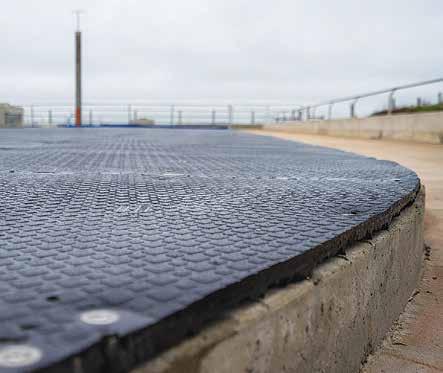
AGRI’s construction division.
“After talking to them, they were very keen to come on board and were very enthusiastic and wanted to come and build it for us,” says Michelle.
“So, we thought, well, why not? And we’re very happy with the results.”
She points out that NumatAGRI’s willingness to participate and dedication to the project was a driving force behind the successful implementation of the feed pad.
The Borries manage three farms in the Lower Waitaki Plains. Their operation features an expansive milking operation with about 2500 cows during winter. Rec-
when feeding out in the paddock. In pursuit of a more effective and efficient system, the couple toured several farms to study existing off-paddock facility designs.
The Borries designed the feed pad following their explorative tours, identifying features they liked and aspects they wished to avoid in their design.
“We saw ones we liked, but a lot of them had woodchips, where we think woodchips are getting harder to get and dearer,” says Rogan, explaining their decision to opt for a rubber matting option instead. The rubber matting had a higher upfront cost but
promised longevity and cost-effectiveness in the long run.
The rubber matting was also supplied by NumatAgri.
The project went ahead smoothly, seamless and with no unexpected hurdles, according to Michelle.
“I’ve worked with a lot of building agencies and stuff with lots of things happening on farm constantly. With Numat, this was just very smooth,” she says.
The couple is waiting to evaluate the full effectiveness of the feed pad design through a complete winter cycle.
@dairy_news facebook.com/dairynews

DAIRY NEWS MAY 14, 2024 MACHINERY & PRODUCTS // 19
The Borries went for a simply design feed pad on their Otago farm.
T&Cs: Advertised savings amount of $500 off MRP (including GST) applies to new DR200SE only purchased between 01/05/24 - 31/07/24. At participating Suzuki dealers while stocks last. Price excludes GST. Excludes demo units and all other promotion. IT’S KIWI-AS, EH. TRT23091_DR200_DN It’s not just the large quartz halogen headlamp, oversize carry racks, front disc brake, quality o-ring chain, dual side stands, clutch lock, large comfy seat and oversize mudflaps that make the DR200SE NZ’s most popular. It’s that it was developed in Whanganui and manufactured in Japan specifically for Kiwi farmers. That’s pretty sweet. Have a yarn to your local Suzuki dealer today or visit suzuki.co.nz SAVE $500, NOW ONLY $5,650+ GST
The rubber matting had a higher upfront cost but promised longevity and cost-effectiveness in the long run, the Borries say.
Introducing NumatAGRI Construction Ridgeback Composting Barns
A revolutionary new barn for the dairy industry.
NumatAGRI streamlines the process of constructing feed pads or cow barns, making every step from design to build straightforward and stress-free.
Ridgeback composting barns are a game-changer for the dairy industry. With 20% more air exchanges compared to traditional barns they compost better and provide a healthier environment for cows. Farmers who make the switch to Ridgeback composting barns say they’ve seen a remarkable increase in production output and big reductions in cow health issues.

Design & Build Feed Pads
The easiest way to build a feed pad
Have a feed pad design in mind but don’t know where to go next with it? NumatAGRI Construction can help design it and build it too. Check out what one of our recent customers had to say about NumatAGRI Construction’s design and build service:
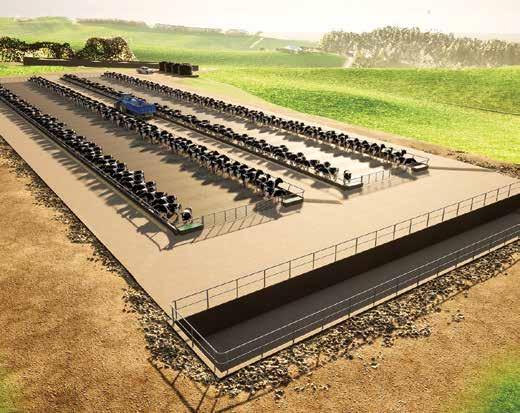
“I’veworkedwithalotofbuildingagencieswithlotsofthings happeningonfarmconstantly.WithNumatAGRIConstruction,the processwasjustverysmooth.We’reveryhappywiththeresults”
Michelle Borrie, North Otago
Chat to a construction consultant today. Call 0800 686 119
































 Rebecca O’Brien
Rebecca O’Brien
































